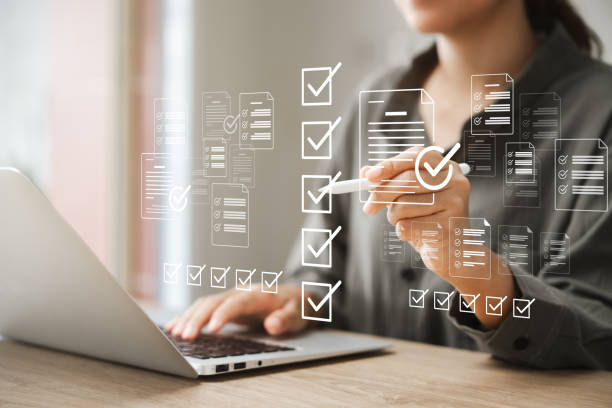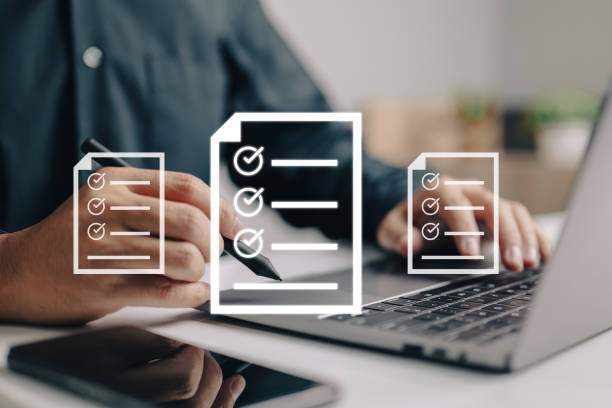Introduction to On-Page SEO and Its Critical Importance
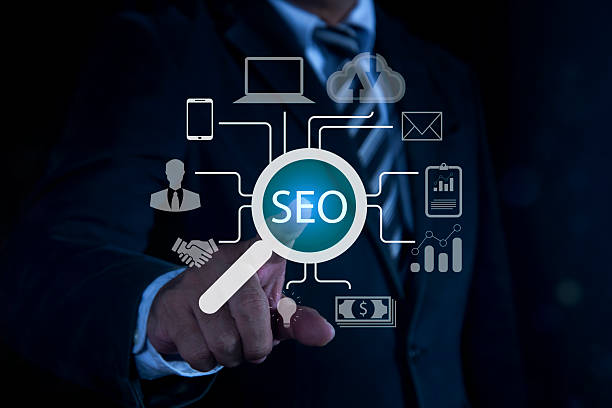
In today’s highly competitive web world, simply having a website is not enough; its visibility has become doubly important.
On-page SEO, or on-page optimization, is a set of techniques and strategies directly applied to your website’s content and structure to improve its ranking in search engines.
This approach is considered the foundation of any successful SEO strategy, as search engines like Google heavily rely on these internal signals to better understand the topic of your pages and their relevance to user searches.
Without a strong On-page SEO, even the best content might never reach its target audience.
The importance of this field is so high that it can be considered the backbone of a powerful online presence.
In fact, On-page SEO helps search engines understand what your page is about, how relevant it is, and what value it provides to users.
This includes not only the use of appropriate keywords but also improving user experience and site structure.
A deep understanding of this topic and its proper implementation is an essential step for any webmaster looking to increase traffic and attract organic visitors.
This process requires precise analysis, continuous implementation, and updates based on changing search engine algorithms.
Therefore, understanding its importance and application is the starting point for success in the digital marketing arena.
Does your current corporate website present a worthy image of your brand and attract new customers?
If not, transform this challenge into an opportunity with Rasaweb’s professional corporate website design services.
✅ Significantly improves your brand’s credibility and image.
✅ Smooths the path for attracting new leads and customers.
⚡ Contact Rasaweb now for a free and specialized consultation!
Keyword Research: The Cornerstone of On-Page SEO
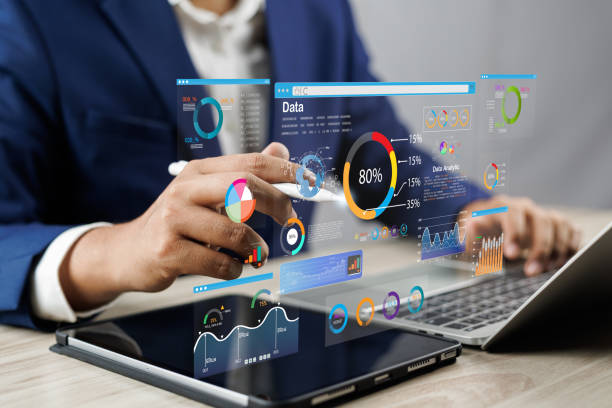
Keyword research is the first and most crucial step in any SEO strategy, especially for On-page SEO.
Choosing the right keywords ensures that your content matches what users are truly searching for.
This process involves identifying the phrases and words that your target audience types into search engines to find information, products, or services related to your business.
Tools like Google Keyword Planner, Ahrefs, and SEMrush can greatly assist you in this journey.
The goal is not just to find keywords with high search volume, but to find relevant and targeted keywords with appropriate search intent.
Search intent can be informational (for learning), commercial (for buying), or navigational (for reaching a specific site).
Understanding these intents helps you produce more accurate content that answers user questions and meets their needs.
For example, if the search intent is “how to do on-page SEO,” your content should be a guide and educational.
If it’s “buy laptop,” it should lead to product pages or product comparisons.
Ultimately, the correct use of researched keywords in the title, meta descriptions, headings, and the main text of the page plays a key role in the success of your On-page SEO and sends stronger signals to search engines for ranking.
Optimizing Title Tags and Meta Descriptions for On-Page SEO
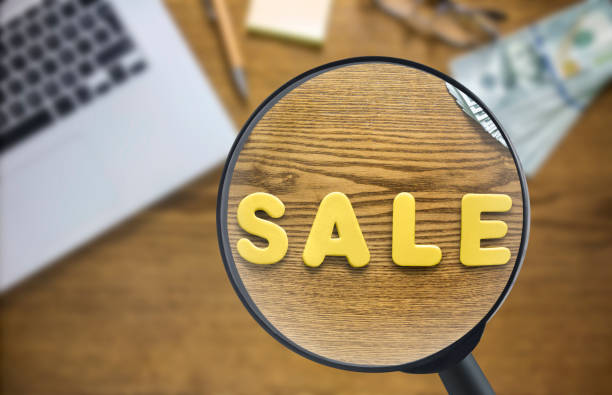
Title Tags and Meta Descriptions are the first things users see in search results and play a vital role in attracting clicks and improving On-page SEO.
The Title Tag is the title displayed in the browser tab and as the main link in search results.
It should be between 50 and 60 characters and place the main keyword at its beginning to be appealing to both search engines and users.
The Meta Description is also a short text (usually between 150 and 160 characters) displayed below the title in search results and should entice users to click.
Although meta descriptions do not directly affect rankings, they impact your Click-Through Rate (CTR), which is itself an important factor in On-page SEO.
Writing engaging, clear title tags and meta descriptions that include relevant keywords increases your page’s visibility and attracts more traffic.
Here is an example of optimizing title tags and meta descriptions in On-page SEO:
| Type | Non-optimized Example | Optimized Example for On-page SEO |
|---|---|---|
| Title Tag | About SEO | What is On-Page SEO? | Comprehensive Guide to On-Page Optimization |
| Meta Description | This page is about on-page SEO and provides information. |
Get familiar with the complete guide to On-Page SEO and optimize your site with On-Page techniques. Increase your ranking on Google! |
Choosing appropriate keywords and naturally placing them in these tags not only helps search engines better understand your content but also significantly increases user click-through rates, which in turn contributes to the overall improvement of your On-page SEO performance.
URL Structure and Its Optimization in On-Page SEO

URL structure is a critical yet sometimes overlooked element in On-page SEO that directly impacts how search engines and users understand page content.
An optimized URL is short, descriptive, and includes the page’s main keyword.
For example, instead of a URL like `yourwebsite.com/page?id=123&cat=456`, an optimized URL for On-page SEO should be something like `yourwebsite.com/on-page-seo-guide`.
This structure not only helps users understand the page’s topic before clicking but also sends stronger signals to search engines to identify the page’s relevance to keywords.
To optimize URLs, it is recommended to use relevant keywords and separate them with hyphens (-).
Avoid special characters, meaningless numbers, and excessively long URLs.
Also, using a hierarchical structure (like `yourwebsite.com/category/subcategory/page-name`) can help search engines understand your website’s overall structure and the relationship between pages.
A clean and logical URL not only improves user experience but also facilitates the crawling and indexing process of your pages by search engine bots.
This factor directly contributes to the effectiveness of your On-page SEO and can make a significant difference in your page rankings in search results.
Therefore, never overlook the importance of optimizing URL structure in your On-page SEO strategy.
Did you know that poor online store design can drive away up to 70% of your potential customers? Rasaweb transforms your sales with professional and user-friendly e-commerce website designs.
✅ Significant increase in sales and revenue
✅ Full optimization for search engines and mobile devices
⚡ [Get a free consultation from Rasaweb]
The Importance of Content and Its Quality in On-Page SEO
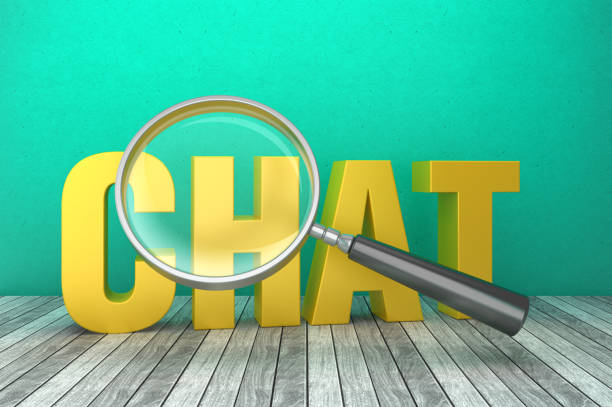
Content is king; this phrase holds truer than ever in the world of On-page SEO.
The quality and relevance of your content directly affect your ranking in search engines.
High-quality content, which answers user questions, provides comprehensive information, and is well-structured, is not only loved by users but also rewarded by search engines.
This includes in-depth research, engaging writing, and appropriate keyword usage.
Simply filling content with keywords (keyword stuffing) not only does not help On-page SEO but can also lead to your website being penalized.
Instead, focus on producing valuable and unique content that naturally incorporates your keywords.
Content types can include educational articles, comprehensive guides, product reviews, news content, and even entertaining content.
Each content type should serve a specific purpose and align with user search intent.
Comprehensive and in-depth content that covers all aspects of a topic often ranks better in search engines.
This shows search engines that your page is an authoritative and complete resource.
Also, ensure your content is readable; use short paragraphs, appropriate headings (H1, H2, H3), lists, and images to improve user experience.
Fresh and updated content also indicates to search engines that your website is active and relevant.
Ultimately, content quality and relevance will be a critical factor in the long-term success of your On-page SEO.
Optimizing Images and Multimedia Files in On-Page SEO
![]()
Images and other multimedia files, if properly optimized, can significantly contribute to your website’s On-page SEO.
The first step in image optimization is compressing them to reduce file size without significant loss of quality.
Large images can slow down page loading speed, which is an important factor in SEO ranking and user experience.
Tools like TinyPNG or WordPress plugins like Smush can be helpful in this regard.
Another important aspect is the use of Alt Text for images.
Alt Text provides a brief and accurate description of the image content and is displayed when the image fails to load for any reason.
This text is also used by search engines to understand the image content and its relevance to the page text.
Make sure Alt Text includes relevant keywords, but avoid keyword stuffing.
Image file names should also be descriptive and include keywords (e.g., `on-page-seo-guide.jpg` instead of `IMG_12345.jpg`).
In addition to images, videos and audio files should also be optimized.
Using appropriate formats, compression, and providing transcripts or subtitles for videos can help search engines index your multimedia content.
By properly optimizing images and other multimedia files, you not only improve your website’s speed and performance but also strengthen your On-page SEO and provide a better user experience for visitors.
Internal Linking and Its Importance in On-Page SEO
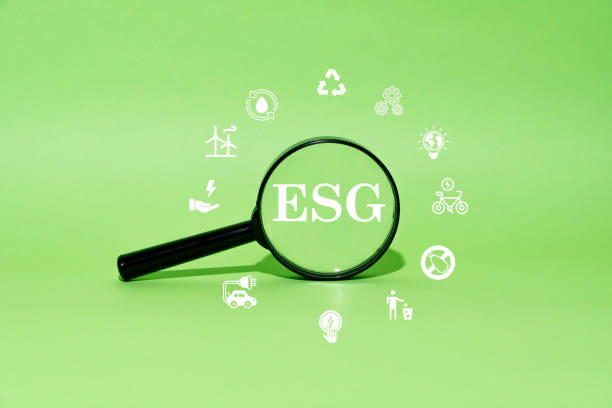
Internal linking is one of the most powerful On-page SEO tools that helps search engines understand your website’s structure, discover new pages, and distribute ranking value (PageRank) among pages.
Internal links are links that point from one page on your website to another page on the same website.
These links play a key role in creating content hierarchy and improving site crawlability.
When creating internal links, use descriptive and keyword-rich anchor texts.
For example, instead of “Click here,” use a phrase like “Comprehensive On-Page SEO Guide.”
This provides more information about the destination page’s content to search engines.
Also, ensure that internal links point to relevant and high-value pages.
A strong internal linking strategy shows search engines which of your pages are more important and helps them easily access all your valuable content.
Here is a simple table of internal linking types and their benefits in On-page SEO:
| Type of Internal Link | Description | Benefits for On-page SEO |
|---|---|---|
| Contextual Links | Links placed within the main body of the content. | Transfer of authority and PageRank, improved topic understanding by search engines. |
| Navigation Links | Links present in menus, footer, and sidebar. | Improved user experience, aid for search engine crawling. |
| “Related Products” or “Similar Posts” links | Links placed in specific sections to suggest more content to the user. | Increased user dwell time, reduced bounce rate, improved indexing. |
A structured and logical internal linking system not only helps search engines better understand your website but also improves user experience and increases user engagement with your content, ultimately leading to overall improvement of your On-page SEO.
User Experience and Page Load Speed in On-Page SEO

User experience (UX) and page load speed are two very important factors that increasingly affect On-page SEO and site ranking in search engines.
Google and other search engines are paying increasing attention to user experience signals such as Bounce Rate, Dwell Time, and Conversion Rate.
A site with poor user experience, even if it has excellent content, may not achieve high rankings.
Page load speed, in particular, is of high importance.
Today’s users expect websites to load quickly, and otherwise, they quickly leave.
Google also considers this as a ranking factor.
Tools like Google PageSpeed Insights can help you identify problems related to site speed and provide solutions for improvement.
To improve load speed, you can consider actions such as optimizing images, using caching, compressing CSS and JavaScript files, and using a CDN (Content Delivery Network).
A fast and user-friendly website not only increases user satisfaction but also sends positive signals to search engines, leading to improved rankings in your On-page SEO.
Focusing on these aspects directly helps strengthen your On-page SEO infrastructure and increases visibility in search results.
Are you dissatisfied with the low conversion rate of visitors to customers on your e-commerce site?
Solve this problem permanently with professional e-commerce website design by Rasaweb!
✅ Increase visitor-to-customer conversion rate significantly
✅ Create an excellent user experience and build customer trust
⚡ Get a free consultation
Reviewing and Analyzing On-Page SEO Performance
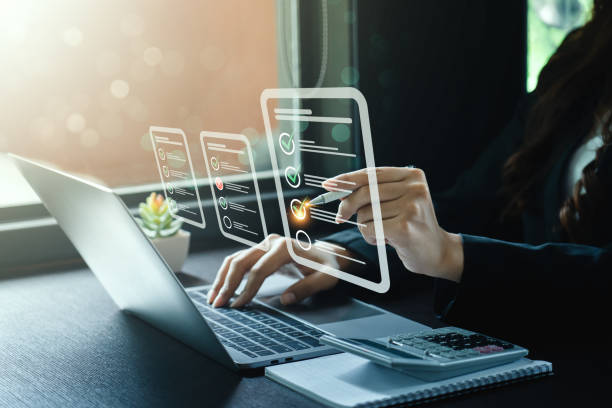
On-page SEO performance analysis is a continuous and vital process that helps you measure the effectiveness of your strategies and identify opportunities for improvement.
Without continuous monitoring and analysis, you cannot understand which parts of your On-page SEO efforts have been successful and which require revision.
Tools like Google Search Console and Google Analytics are essential for this purpose.
Google Search Console provides valuable information about how Google interacts with your website.
This tool shows you which keywords your site appears for in search results, how many clicks it receives, and what crawling or indexing errors exist.
Through it, you can review keyword performance, top-performing pages, and technical issues.
Google Analytics also provides comprehensive data about user behavior on your website, including the number of visitors, dwell time, bounce rate, and user flow.
By combining the data from these two tools, you can get a complete picture of your On-page SEO performance.
In addition, paid SEO tools like Ahrefs and SEMrush can provide deeper analyses, including competitor analysis, backlink analysis, and keyword suggestions.
By regularly monitoring these metrics and adjusting your On-page SEO strategies based on the data obtained, you can continuously improve your rankings and attract more organic traffic.
These analytical steps are absolutely essential for sustainable and successful On-page SEO.
Advanced Tips and the Future of On-Page SEO

On-page SEO is not a static field; rather, it is constantly evolving with technological advancements and changes in search engine algorithms.
Understanding and implementing advanced tips can set your website on the path to long-term success.
One of the most important developments is the increasing importance of voice search.
With the widespread use of voice assistants like Siri and Google Assistant, how users search is changing.
To optimize On-page SEO for voice search, focus on longer, conversational long-tail keywords that resemble the questions people naturally ask.
Another topic is E-E-A-T (Expertise, Experience, Authoritativeness, Trustworthiness).
Google increasingly values pages written by real experts that provide reliable information.
Therefore, to strengthen your On-page SEO, focus on providing high-quality content prepared by experienced and specialized authors.
Demonstrating author credibility and content sources is very important.
The future of On-page SEO is also intertwined with artificial intelligence and machine learning.
Algorithms like RankBrain, BERT, and MUM help Google better understand user search intent and provide more relevant content.
This means that simply using keywords is no longer enough; your content must truly answer user questions and provide real value.
Given these changes, staying abreast of developments and continuously implementing the latest On-page SEO practices is key to success in today’s digital landscape.
Frequently Asked Questions
| Number | Question | Answer |
|---|---|---|
| 1 | What is On-Page SEO? | On-Page SEO refers to a set of actions performed within a website to optimize its pages for better ranking in search results. |
| 2 | What is the most important factor in On-Page SEO? | High-quality, relevant, and comprehensive content that meets user needs is the most important factor in On-Page SEO. |
| 3 | What role does the Title Tag play in On-Page SEO? | The Title Tag is one of the most crucial factors that tells search engines and users what the page content is about. It should include the main keyword and be engaging. |
| 4 | How important is the Meta Description tag? | Although it does not directly affect rankings, it is very effective on the Click-Through Rate (CTR) in search results and encourages users to visit the page. |
| 5 | How is image optimization done in On-Page SEO? | By using appropriate alt tags, compressing image size to increase load speed, and meaningful image file naming. |
| 6 | What is the importance of using headings (H1, H2, H3) in On-Page SEO? | Headings help structure content, increase readability, and assist search engines in understanding the hierarchy and sub-topics of the content. |
| 7 | What is Internal Linking and what are its benefits? | Internal linking means creating links between different pages of a website. This helps with authority distribution, improving user navigation, and assisting search engine crawling. |
| 8 | Where should the Focus Keyword be placed on the page? | The main keyword should be placed in the title tag, meta description, H1, first paragraph, naturally throughout the text, and if possible, in the URL. |
| 9 | What effect does copied or duplicate content have on On-Page SEO? | Duplicate content can harm a site’s ranking and confuse search engines about which version is original, potentially leading them to flag it as spam. |
| 10 | How important is page load speed in On-Page SEO? | Page load speed is an important ranking factor and directly impacts user experience. Slow pages lead to increased user bounce rates. |
And other advertising services by Rasa Web Advertising Agency
Smart Marketplace: An effective tool for analyzing customer behavior with attractive UI/UX design.
Smart Sales Automation: Professional optimization for increasing website traffic by customizing user experience.
Smart Advertising Campaign: A fast and efficient solution for customer acquisition with a focus on Google Ads management.
Smart SEO: Revolutionize SEO ranking improvement with custom programming.
Smart Conversion Rate Optimization: A specialized service for online growth based on real data.
And over hundreds of other services in the field of internet advertising, advertising consulting, and organizational solutions
Internet Advertising | Advertising Strategy | Advertorials
Resources
- On-Page SEO Training at Seorooz
- What is On-Page SEO? – MihanWP
- Comprehensive On-Page SEO Guide – IranServer
- On-Page SEO Checklist – Webramz
? Rasaweb Afarin: Your digital partner for growth and visibility in the online world. From custom website design to SEO optimization, we offer comprehensive solutions for your business success.
📍 Tehran, Mirdamad Street, next to Bank Markazi, Southern Kazeroon Alley, Ramin Alley, No. 6



